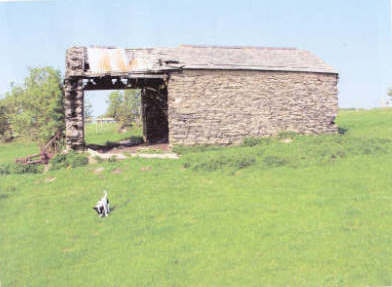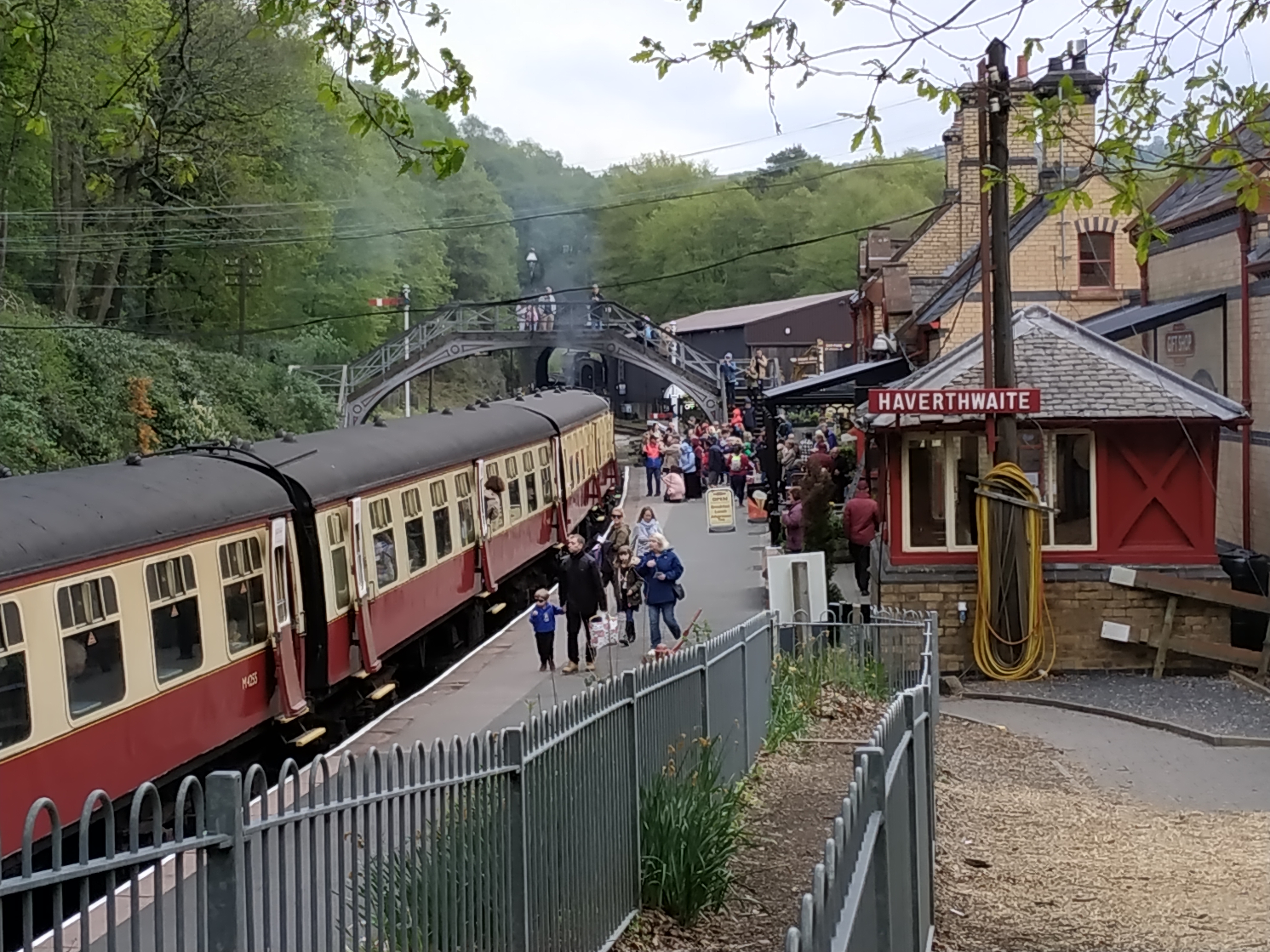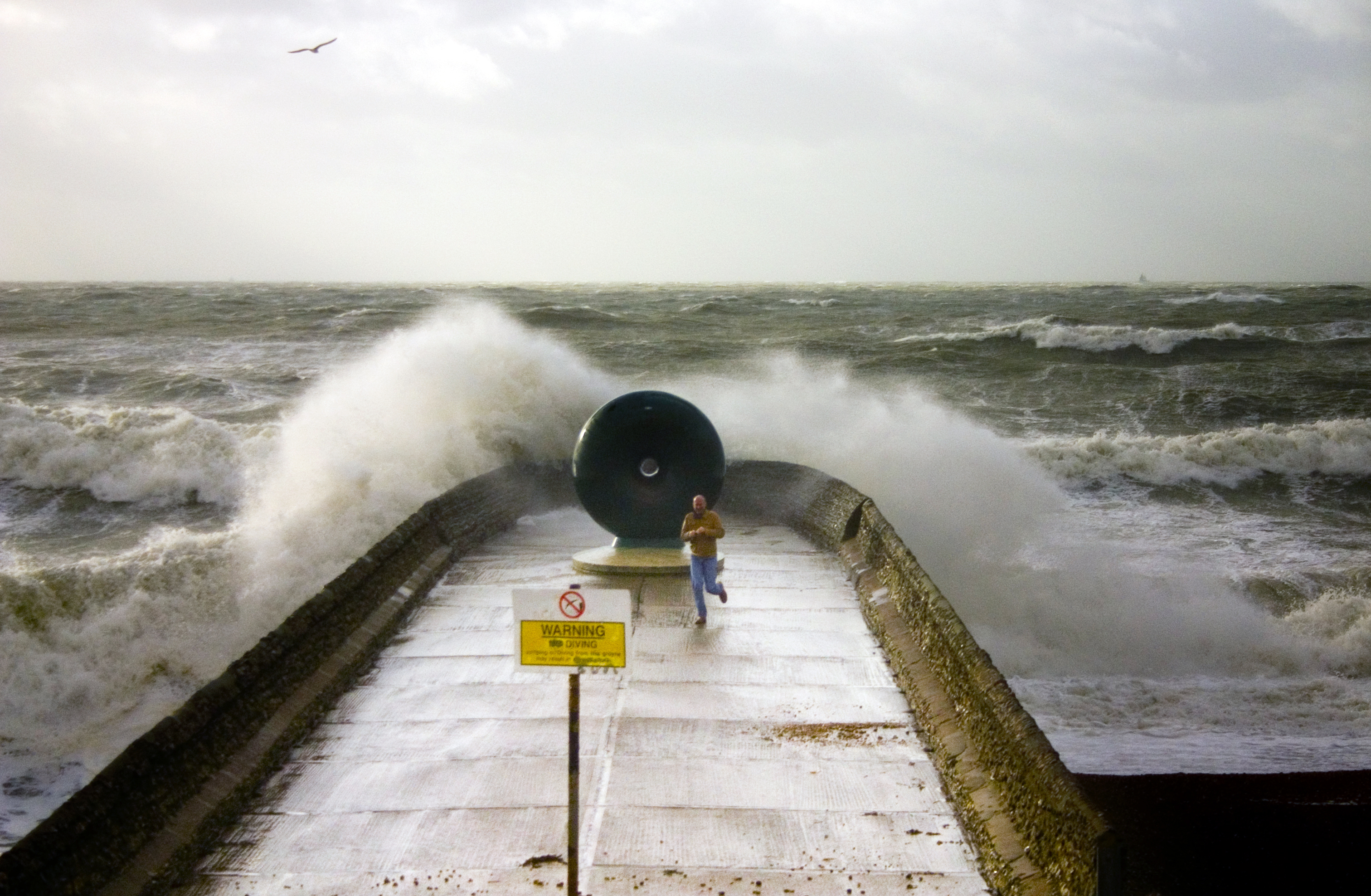|
Backbarrow
Backbarrow is a village in the Lake District National Park in England. It lies on the River Leven about 5 miles (8 km) northeast of Ulverston in Furness in the county of Cumbria. History Backbarrow probably grew during the Elizabethan period, due to the corn mills that were built along the river. Earlier mills at the site had been owned by Furness Abbey, which by this time had been dissolved. Development increased due to the iron furnace that was built in Backbarrow in 1711. The furnace has been described as the first efficient blast furnace. The cotton mills continued to grow in size during the Victorian period. In 1868 an extension of the Furness Railway was built through the village to transport iron and products from the mills. Though the line was closed in the 1960s with the demise of the ironworks, the section from Haverthwaite to Lakeside, which passes through Backbarrow, remains open as a heritage railway (see Lakeside and Haverthwaite Railway). Backbarrow was ... [...More Info...] [...Related Items...] OR: [Wikipedia] [Google] [Baidu] |
Harrison Ainslie
The firm of Harrison Ainslie & Co. was a British firm of ironmasters and iron ore merchants, selling high quality haematite from their mines on Lindal Moor to smelters in Glasgow, Scotland, South Wales and the Midlands. From a 21st-century perspective, they are more interesting as the last operators of charcoal-fired blast furnaces in Great Britain. Their furnaces were stone-built, water-powered, and much smaller than the coke-fired furnaces of the same era. Managers At various times the company was known as Richard Ford & Co, the Newland Co, George Knott & Co, Knott, Ainslie & Co, Harrison Ainslie & Co, Harrison Ainslie, Roper & Co, and finally as Harrison Ainslie & Co Ltd. Associated companies were the Hampshire Haematite Iron Co, Melfort Gunpowder Co, Lorn Furnace Co and Barrow & Ulverston Rope Co. Newland Furnace was built in 1747 by Richard Ford, William Ford, Michael Knott and James Backhouse. Richard Ford was born in Middlewich in 1697. He was active in the Furness ir ... [...More Info...] [...Related Items...] OR: [Wikipedia] [Google] [Baidu] |
Listed Buildings In Haverthwaite
Haverthwaite is a civil parish in the South Lakeland District of Cumbria, England. It contains ten Listed building#England and Wales, listed buildings that are recorded in the National Heritage List for England. Of these, one is listed at Grade II*, the middle of the three grades, and the others are at Grade II, the lowest grade. The parish is in the Lake District National Park. It contains the villages of Haverthwaite and Backbarrow, and is otherwise mainly rural. A surviving building from its industrial past is a former saltpetre Sugar refinery, refinery for a gunpowder factory. The other listed buildings include houses and associated structures, farm buildings, bridges, a war memorial, and a church. __NOTOC__ Key Buildings References Citations Sources * * * * * * * * * * * * {{DEFAULTSORT:Haverthwaite Lists of listed buildings in Cumbria ... [...More Info...] [...Related Items...] OR: [Wikipedia] [Google] [Baidu] |
Lakeland Motor Museum
The Lakeland Motor Museum is a museum now located at Backbarrow, Cumbria, England which houses a collection of classic cars, motorcycles, bicycles, pedal cars and motoring related items and memorabilia and an exhibition dedicated to the land and water speed record activities of Sir Malcolm Campbell and his son Donald Campbell. History The Museum was established in Grange-over-Sands in 1978 as an extra attraction for the Holker Hall stately home. The museum was created by Donald Sidebottom to contain the collection of cars and related memorabilia that he had been collecting since the 1960s. In 2006, the collection was purchased by a subsidiary company of Winander Group Holdings Ltd, which also own Windermere Lake Cruises. After more than thirty years at Holker Hall, the museum relocated to the site of the former Reckitt's Blue Dye Works carton packaging sheds at Backbarrow in 2010. The collection The museum features a unique collection of over 30,000 motoring related exhibits i ... [...More Info...] [...Related Items...] OR: [Wikipedia] [Google] [Baidu] |
River Leven, Cumbria
The River Leven (pron. ) is a short river in the ceremonial county of Cumbria, falling within the historic boundaries of Lancashire. It drains Windermere from its southernmost point and flows for approximately into the northern reaches of Morecambe Bay. The river and its estuary are the boundary between the Cartmel Peninsula and Furness Peninsula and is part of North Lonsdale, also known as Lancashire North of the Sands. The upriver limit of tidal flow is close to the village of Haverthwaite. Also at this point is to be found Low Wood Bridge which, until the coming of the railways, was the first bridging point across the river. The Leven is navigable upstream as far as Low Wood, and downstream from Windermere to Newby Bridge. Apart from Newby Bridge and Haverthwaite, the only other settlements on the Leven are the villages of Backbarrow and Greenodd. The river's steep fall around Backbarrow allowed industrial use of the river for the ultramarine mill and also a small hyd ... [...More Info...] [...Related Items...] OR: [Wikipedia] [Google] [Baidu] |
Haverthwaite
Haverthwaite is a small village and civil parish in the Furness region of Cumbria, England. It is also within the boundaries of the Lake District National Park The Lake District National Park is a national park in North West England that includes all of the central Lake District, though the town of Kendal, some coastal areas, and the Lakeland Peninsulas are outside the park boundary. The area was desi .... It is located several miles east of Ulverston and is near the southern end of Windermere. In the United Kingdom Census 2001, 2001 census the parish had a population of 728, increasing at the United Kingdom Census 2011, 2011 census to 797. The village gets part of its name from the Old Norse word ''thwaite (placename element), thwaite'' which usually refers to a clearing or settlement in the forest. History The village was originally a Viking settlement, but it has been suggested that there may have been a settlement of sorts there before the Vikings arrived. In the ... [...More Info...] [...Related Items...] OR: [Wikipedia] [Google] [Baidu] |
Wilfred Lancaster
Wilfred Lancaster (27 September 1904 – July 1987) was an English professional association footballer who played as an outside forward. Born in Backbarrow, Lancashire, he was playing for the Dick, Kerr's company team when he was signed by Football League First Division side Burnley in December 1924. Lancaster made his League debut on 26 December 1924 in the 0–2 defeat away at Huddersfield Town, and played again the following match against Everton. He then spent two months out of the team, returning for the 5–4 win over West Ham United on 28 February 1925. Lancaster made his final appearance for Burnley in the penultimate fixture of the 1924–25 campaign, a 1–1 draw with Aston Villa at Turf Moor Turf Moor is an association football stadium in Burnley, Lancashire, England, which has been the home of Burnley F.C. since 1883. This unbroken service makes Turf Moor the second-longest continuously used ground in English professional footbal .... He was released by Burnl ... [...More Info...] [...Related Items...] OR: [Wikipedia] [Google] [Baidu] |
Dolly Blue
Bluing, laundry blue, dolly blue or washing blue is a household product used to improve the appearance of textiles, especially white fabrics. Used during laundering, it adds a trace of blue dye (often synthetic ultramarine, sometimes Prussian blue) to the fabric. Uses White fabrics acquire a slight color cast after use (usually grey or yellow). Since blue and yellow are complementary colors in the subtractive color model of color perception, adding a trace of blue color to the slightly off-white color of these fabrics makes them appear whiter. Laundry detergents may also use fluorescing agents to similar effect. Many white fabrics are blued during manufacturing. Bluing is not permanent and rinses out over time leaving dingy or yellowed whites. A commercial bluing product allows the consumer to add the bluing back into the fabric to restore whiteness. On the same principle, bluing is sometimes used by white-haired people in a blue rinse. Bluing has other miscellaneous ho ... [...More Info...] [...Related Items...] OR: [Wikipedia] [Google] [Baidu] |
Reckitt & Sons
Reckitt and Sons was a leading British manufacturer of household products, notably starch, black lead, laundry blue, and household polish, and based in Kingston upon Hull. Isaac Reckitt began business in Hull in 1840, and his business became a private company "Isaac Reckitt and Sons" in 1879, and a public company in 1888. The company expanded through the late 19th and early 20th centuries. It merged with a major competitor in the starch market J. & J. Colman in 1938 to form Reckitt & Colman Colmans' food business was subsequently divested and a merger made with Benckiser to form Reckitt Benckiser in 1999. the company's original site at Dansom Lane, Hull, is still used for manufacturing. History Origins In 1818 Isaac Reckitt and his brother Thomas established a milling business in Boston, Lincolnshire with capital of £1,300 (), building Maud Foster Mill (1819), and later expanding their business into cement manufacture (1823) and bone milling (1828). Isaac quit ... [...More Info...] [...Related Items...] OR: [Wikipedia] [Google] [Baidu] |
2009 Great Britain And Ireland Floods
The 2009 Great Britain and Ireland floods were a weather event that affected parts of Great Britain and Ireland throughout November and into December 2009. November was the wettest month across the United Kingdom since records began in 1914 and had well above average temperatures. The worst affected area in Great Britain was the English county of Cumbria. The Irish counties of Clare, Cork, Galway and Westmeath were among the worst affected areas of Ireland. European windstorms bringing heavy rain and gale-force winds caused damage and flooding to the south of Great Britain on 13–14 November. Unsettled weather continued across the south and later to the north. On 19–20 November, many towns and villages in Cumbria and Dumfries and Galloway were affected. A number of bridges collapsed, one of which led to the death of a police officer, who was standing on the bridge when it collapsed. Another death occurred on 21 November as a canoeist was trapped against a tree near Poundsgate, ... [...More Info...] [...Related Items...] OR: [Wikipedia] [Google] [Baidu] |
Newby Bridge
Newby Bridge is a small Hamlet (place), hamlet in the Lake District, Cumbria, England. Historic counties of England, Historically in Lancashire, it is located several miles west of Grange-over-Sands and is on the River Leven, Cumbria, River Leven, close to the southern end of Windermere. The hamlet is the site of Newby Bridge railway station, an intermediate halt on the Lakeside & Haverthwaite Railway. A terrace of houses adjoining the railway were built by the Furness Railway for its workers. The A590 road runs through Newby Bridge connecting Barrow-in-Furness to the M6 motorway close to Kendal. History The name derives from the bridge over the River Leven. See also *Listed buildings in Colton, Cumbria *Listed buildings in Staveley-in-Cartmel References Hamlets in Cumbria Furness Staveley-in-Cartmel Colton, Cumbria {{Cumbria-geo-stub ... [...More Info...] [...Related Items...] OR: [Wikipedia] [Google] [Baidu] |






